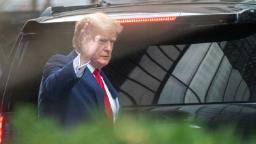[ad_1]

The system can apply to documents regarding intelligence activities, foreign relations, military plans and programs for safeguarding nuclear materials, for example. By classifying information, the government restricts who can see the documents and where he or she can see them.
Here are key things to know about how the classification system works.
There are three basic levels of classification, based on the damage that could be done to national security if the information was leaked.
Top Secret
Some of the materials recovered from Trump’s Florida home were marked as Top Secret SCI.
Secret
Information is classified as Secret if the information is deemed to be able to cause “serious damage” to national security if revealed.
Confidential
Confidential is the least sensitive level of classification, applied to information that is reasonably expected to cause “damage” to national security if disclosed.
What might be classified as a Top Secret document?
“The difference between Secret and Top Secret is quite significant,” said Philip Mudd, a CNN counterterrorism analyst and former CIA analyst.
Nuclear codes could be classified as Top Secret, for example, as well as information from an especially sensitive human source.
But there are even more narrow classifications within the Top Secret designation. For example, intercepted communications may be classified as Top Secret SCI.
Another category of sensitive information within either Top Secret or Secret documents is known as an SAP, or special access program. Not everyone with a Top Secret security clearance may be privy to the information in an SAP.
These higher level designations further restrict who can see the information and where it can be viewed.
How is information classified?
Certain people within the government have classification authority. For less sensitive classified material, he or she may make a judgment call about the impact the information could have on national security if disclosed.
But a classification of Top Secret SCI would be automatic, said Mudd.
That may be because the information would reveal a source the United States uses or a certain method of obtaining intelligence information.
Who can see a Top Secret document and where?
Then, there may be extra security protocols involved in viewing Top Secret information. Some documents must be viewed in what’s known as a SCIF, or a sensitive compartmented information facility.
There are technical standards that need to be met before a room or building can be designated as a SCIF, said Mudd. Multiple locks may be required, for example, and access to the room is restricted to people with specific security clearances.
[ad_2]
